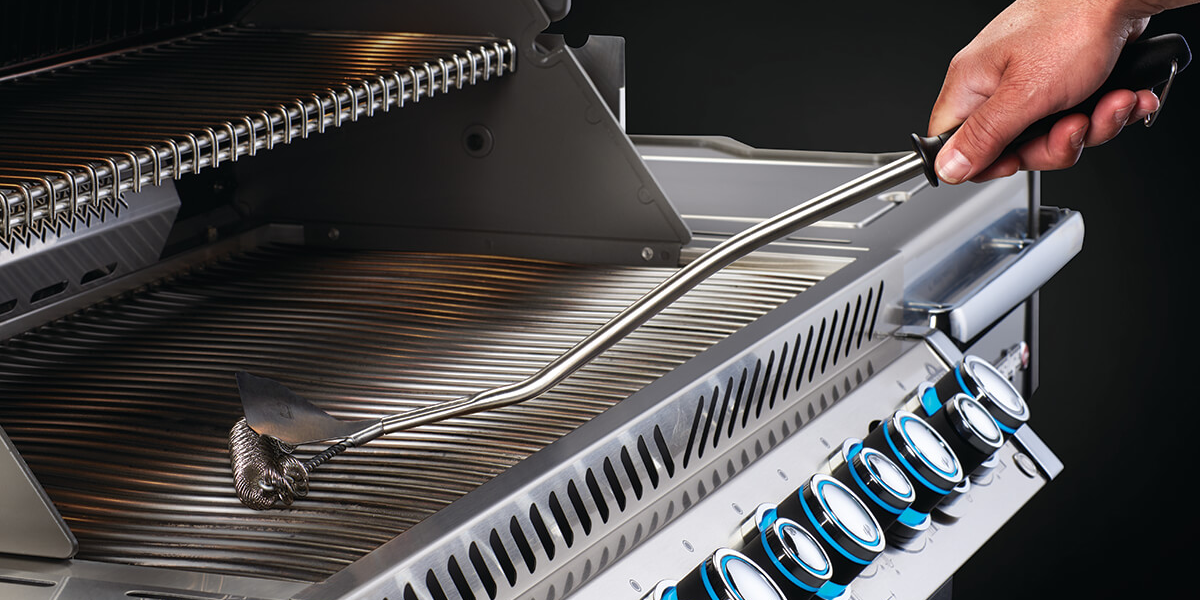Grill Grate Cooking Temperatures: Mastering the Heat
Written By James Morgan
When it comes to barbecuing, understanding the nuances of grill grate cooking temperatures is essential. Whether you're a seasoned pitmaster or a backyard barbecue enthusiast, knowing how to manage the heat on your grill can make all the difference between a perfectly seared steak and a burnt disaster. Let's dive into the art and science of grilling, focusing on getting those temperatures just right.

Why Temperature Control Matters
The key to successful grilling lies in temperature control. Different foods require different cooking temperatures to achieve the desired texture and flavor. For instance, while a steak might need a quick sear at high temperatures to lock in juices, a rack of ribs benefits from low and slow cooking to become tender. Understanding these differences is crucial for any barbecue enthusiast.
High Heat vs. Low Heat: Knowing the Difference
Grilling is not just about throwing meat on the fire. Knowing the difference between high and low heat can help you determine the best cooking method for your food. High heat, typically between 450F and 600F, is great for searing meats, whereas low heat, around 225F to 275F, is ideal for smoking and slow-cooking.
High-Heat Grilling
High-heat grilling is perfect for foods that cook quickly, such as burgers, steaks, and seafood. The intense heat creates a delicious crust on the outside while keeping the inside juicy. For more on preventing food sticking to grates, visit Food Sticks to Grill Grates.
Low-Heat Grilling
Low-heat grilling is often referred to as barbecuing. It is perfect for larger cuts of meat, like pork shoulders or briskets, which benefit from slow cooking. This method allows the meat to absorb smoky flavors and become tender. For tips on smoking meat, check out Smoking Meat on Grill Grates.
Tools to Measure Grill Grate Cooking Temperatures
Accurate temperature measurement is a must for any grill master. Using the right tools ensures you achieve the perfect cook every time. Digital thermometers, infrared thermometers, and grill thermometers are some of the essential tools you should have.
Digital Thermometers
Digital thermometers are great for checking the internal temperature of meats and ensuring they are cooked to perfection. They offer quick and precise readings.
Infrared Thermometers
These are excellent for measuring the surface temperature of your grill grates. Knowing the exact temperature of the grill surface helps in ensuring even cooking. For more on grill science, check out Science of GrillGrates.
Adjusting Grill Grate Cooking Temperatures
Adjusting your grill's temperature is an art. It involves managing the heat source, adjusting the vents, and sometimes moving the food around to ensure even cooking. For gas grills, this means adjusting the knobs, while for charcoal grills, it may involve adding or removing coals and adjusting airflow.
Gas Grills
For gas grills, temperature control is straightforward. Adjust the burners to increase or decrease the heat. Make sure to preheat your grill before placing the food on it.
Charcoal Grills
Charcoal grills require a bit more finesse. Control the temperature by adjusting the amount of charcoal and the position of the vents. This allows you to create different heat zones for various cooking needs.
Common Grilling Mistakes to Avoid
Even seasoned grillers make mistakes. Avoiding these common pitfalls can save your food and your pride.
Not Preheating the Grill
A common mistake is not preheating the grill. This can lead to uneven cooking and sticking. Always allow the grill to reach the desired temperature before cooking.
Flare-Ups
Flare-ups occur when fat drips onto the flames, causing sudden bursts of fire. This can char your food. To learn how to prevent flare-ups, visit Prevent Flare-Ups.
Using the Wrong Heat
Using the wrong heat for the type of food can ruin it. Always match the heat to the food being cooked.
Not Cleaning the Grill
A dirty grill can impart off-flavors to your food. Regularly clean your grill grates to maintain the best flavor. For cleaning tips, you can refer to How to Clean Grill Grates.
FAQs
What is the ideal grill grate cooking temperature for steak?
The ideal temperature for grilling steak is between 450F and 500F, which allows for a perfect sear.
How can I measure grill grate temperatures without a thermometer?
You can use the hand test: hold your hand about 5 inches above the grill grate. If you can only hold it there for 2-4 seconds, the heat is high, 5-7 seconds is medium, and 8-10 seconds is low.
Can I bake on grill grates?
Yes, you can bake on grill grates by creating an indirect heat zone. Check out Baking on Grill Grates for more information.



